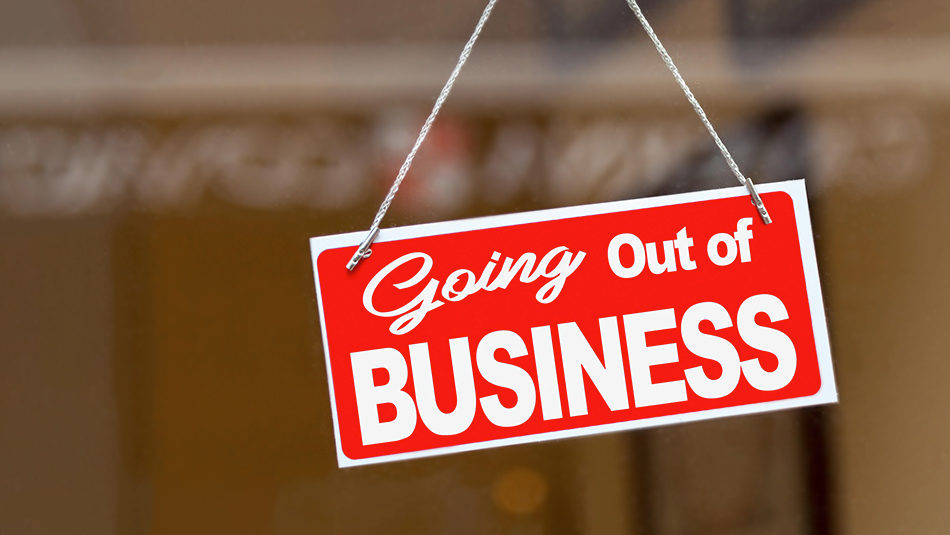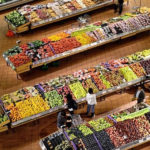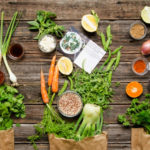
Grocery Shopping in 2031: Are you ready for a whole new world?
How will grocery shopping be different in 2031? Consider that the first iPhone was released just 12 years ago, and it has changed everything we do — from getting directions, booking travel, summoning a car, staying in touch with friends, reading the news, getting recommendations. You know what I am saying. In fact, we use our phones for just about everything but making a call.
Online shopping, often from our phones, is already changing the way we shop for our groceries, and we’re just getting started!
Here are a few of my predictions of what grocery shopping will be like 12 years into the future.
Supermarkets the Brick-and-Mortar Armageddon
Every day seems to bring another report of store closings or bankruptcy proceedings. Supermarkets have actually managed to withstand the onslaught of declining brick-and-mortar numbers better than most categories.
Changing consumer behavior has led Pizza Hut to announce the closure of 500 eat-in locations, as more people use their Pizza Hut Express (pick up) locations. Barneys New York just went into Chapter 11, hoping to negotiate better store leases. Their NYC flagship location reportedly pays $30 million in annual rent. Sears and K-Mart just announced 26 more store closings. Fashion retailer A’gaci, which only emerged from Chapter 11 last year, is throwing in the towel and now plans to close all its remaining stores. GNC is said to be closing 900 stores.
A report in Business Insider estimates that as many as 8,200 US store locations will shutter in 2019. That’s up from ‘only’ 5,864 in 2018.
Meanwhile Lowe’s is laying off ‘thousands’ of workers. A report in Retail Dive quotes a study that private equity owners have killed 600,000 retail jobs in the last decade, with 1,000,000 more in jeopardy. It goes on to say that 80% of the major retail bankruptcies in 2019 are private-equity owned. Fitch Ratings recently added JC Penney ($1.8 billion debt) to its ‘loans of concern’ list, with retail making up more of the list than any sector.
It’s going to take a lot of yoga studios to fill all those empty storefronts.
Albertsons the largest privately owned supermarket chain, has reduced debt by $1 billion and is again thinking about an IPO. Maybe they will be able to escape the fate of so many other privately held retailers, but with the continuing move toward online grocery shopping, there will inevitably be a winnowing of the number of supermarket locations in the country. King Kullen is closing stores even though they are in the process of being taken over by Stop & Shop.
Consumers Drawn to Smaller, Specialty Stores
As more and more consumers drift toward online grocery shopping (more about that below), stores can compete by coming up with new tactics. They can offer things you can’t buy on Amazon ( there are a few things left!) and a ‘treasure hunt’ shopping experience that includes the pleasure of finding new and unexpected things. In the fashion sector, smaller boutiques with unique offerings are hanging in, while the department stores struggle. Similarly, in the grocery sector, smaller, more nimble stores may have the advantage over the bigger stores and chains.
For instance, Mollie Stone’s is opening its 10th store in the Bay Area next year. They specialize in gourmet, local and natural products, and take pride in being part of the neighborhood. They even provide free shuttle bus service around their Pacific Heights store. “We’re a small player in a big ocean,” said Stone of the difference between his store and Whole Foods. “We’re community-minded and we service the local needs of the community. When you focus on that as opposed to global growth and numbers of stores, that makes a big difference.”
Trader Joe’s is not exactly a small player; it’s owned by Ahold, which is the biggest chain in Europe that’s now adding stores on the East Coast. Known for their quirky merchandising and heavy reliance on unique private label products, they aren’t resting on their laurels. Knowing they have to adapt to compete, they recently announced big changes to their produce department. They are dramatically increasing the number of produce items that can be bought loose rather than pre-packaged. If you frequent Trader Joe’s you know this is the equivalent of them dropping Two Buck Chuck from their shelves. But they know that they need to keep that ‘specialty store’ feeling, and they realized that pre-packaged produce does not contribute to that image.
Online Grocery Shopping Looks Very Different
Online purchases only for about 5% of grocery sales in the U.S. Many stores are struggling to find a way to give consumers the convenience they want but still make a profit. A recent survey by Field Agent showed far more consumers are ordering online for curbside or in-store pick up than for delivery to their home. This method is likely to continue to outpace home delivery. This is good news for grocers since this is a less expensive proposition to execute.
Another fast-growing trend is the subscription model. Instacart and Amazon have had subscription plans in place for unlimited home delivery for some time, of course, but retailers are now getting into the game. Albertsons has been testing the service in twelve stores since March and is reportedly seeing a strong increase in shopping frequency by subscribers. Walmart is testing unlimited delivery service in several cities at $98 for the year. That undercuts Amazon’s $119 yearly subscription rate. And just one delivery a month would make the subscription a better deal than paying the going rate of $9.95 for each delivery. The advantage to retailers is that consumers will likely increase their shopping frequency at the store where they have prepaid for delivery.
In a more esoteric glimpse of the future, 7-Eleven now offers delivery wherever you are, even if you are at the beach or in a park. The service uses an app that uses the geo-locator on your phone to find you . Meanwhile, Uber has expanded its Uber Eats restaurant delivery service to include grocery delivery. Since Uber has 4 million drivers, this service could be a game-changer in the grocery delivery business.
CPG and Fresh Produce Manufactures Embrace Change
So what does all this change mean for packaged goods manufacturers and purveyors of fresh foods? Just as supermarkets are adapting to rapidly changing consumer demands, their suppliers will have to do the same. For instance, as smaller retailers try to differentiate themselves from the crowd, they will be looking for products and packaging that imply a more local, smaller brand.
Del Monte launched a line of cut fruit in a cup with a film top, so it looks more like fresh cut fruit from the deli. The giant brands that don’t adapt will wither. Kraft Heinz just reported dismal numbers, and their new CEO has acknowledged they have to change to survive. Packaged foods giants like Nestle and Unilever are investigating the alternative protein category, looking to adapt to changing tastes.
Even Tyson, the largest meat processor in the country, is launching a product line using plant-based alternatives. What better signal than that could there be to tell us that twelve years in the future will be a whole different world?





